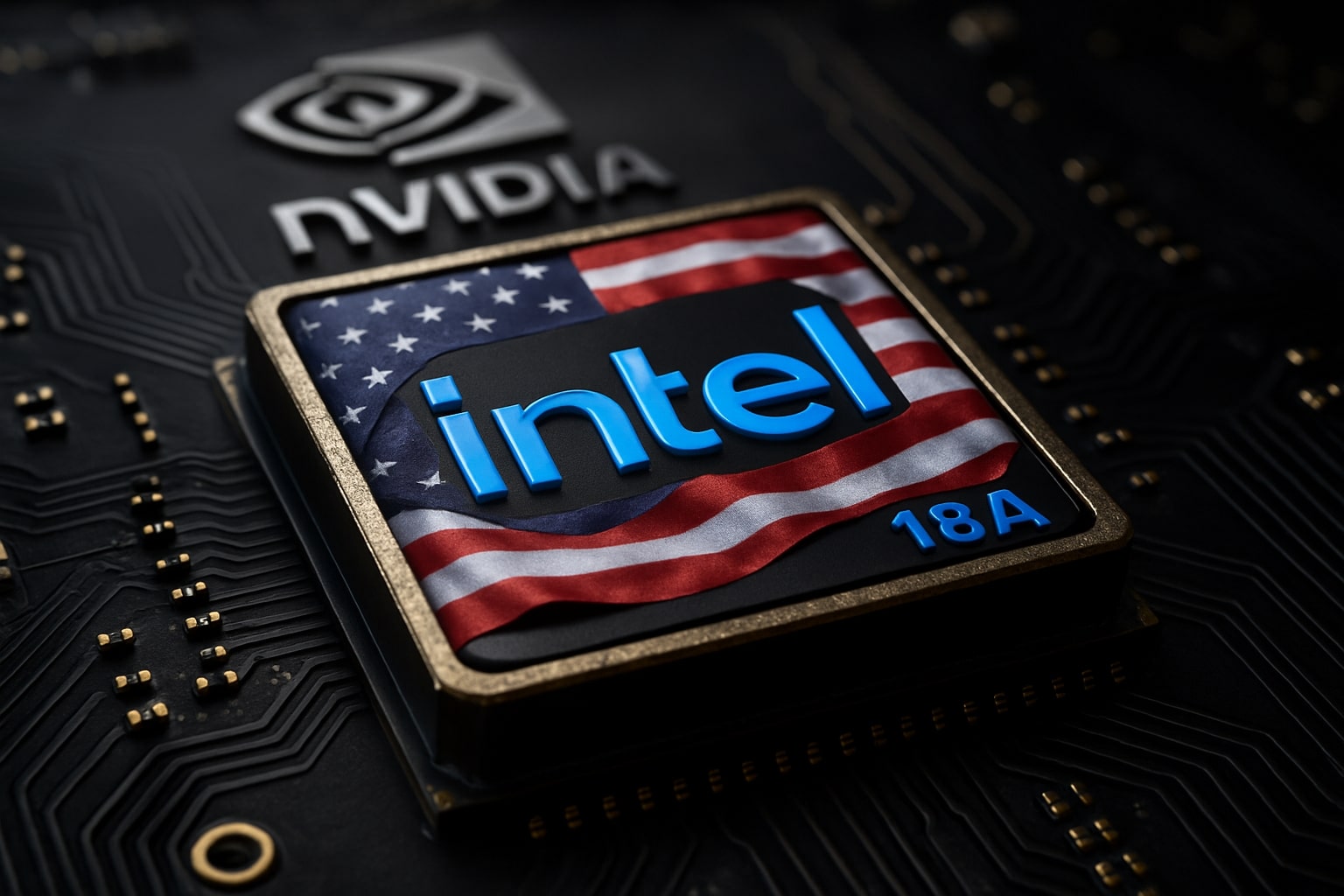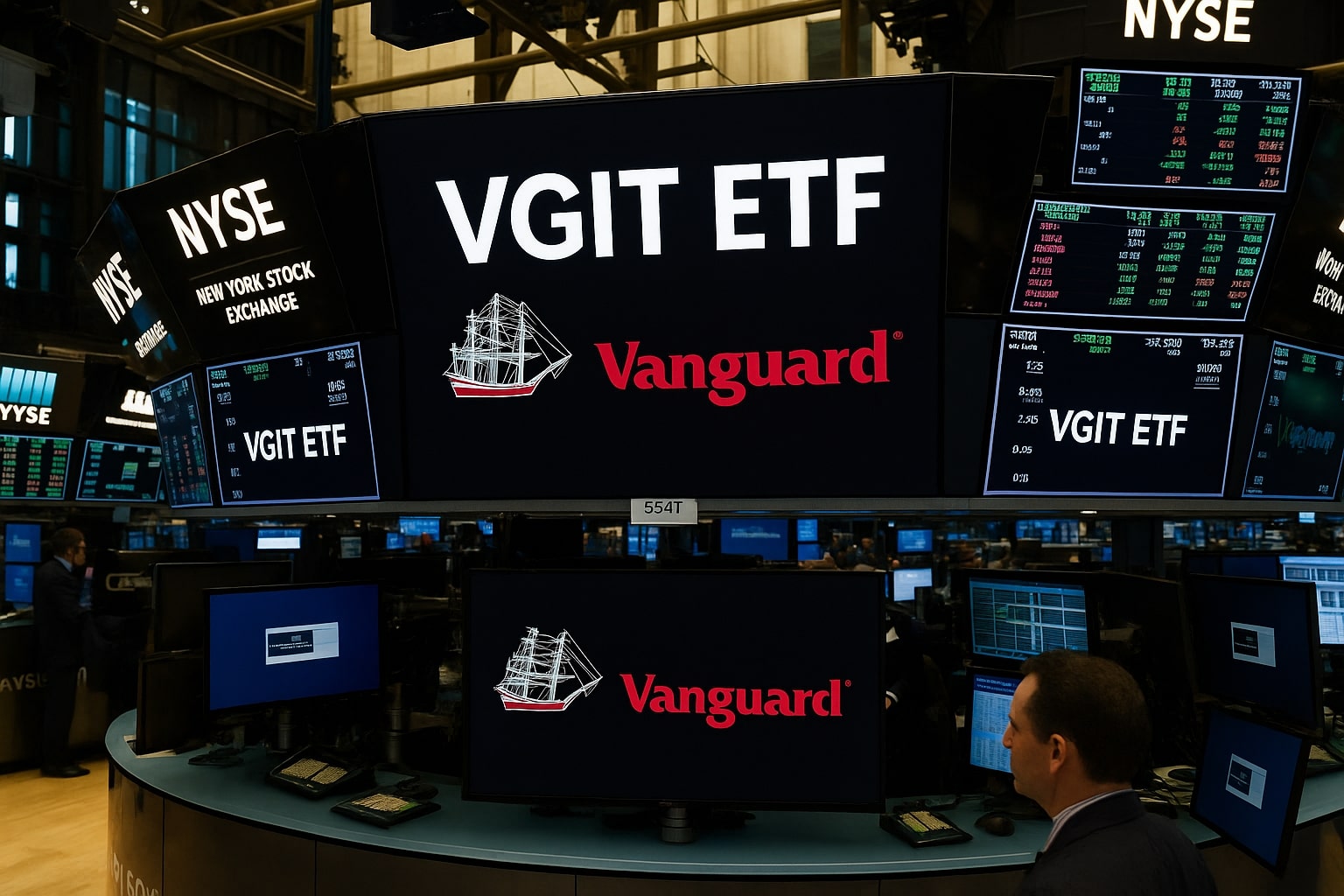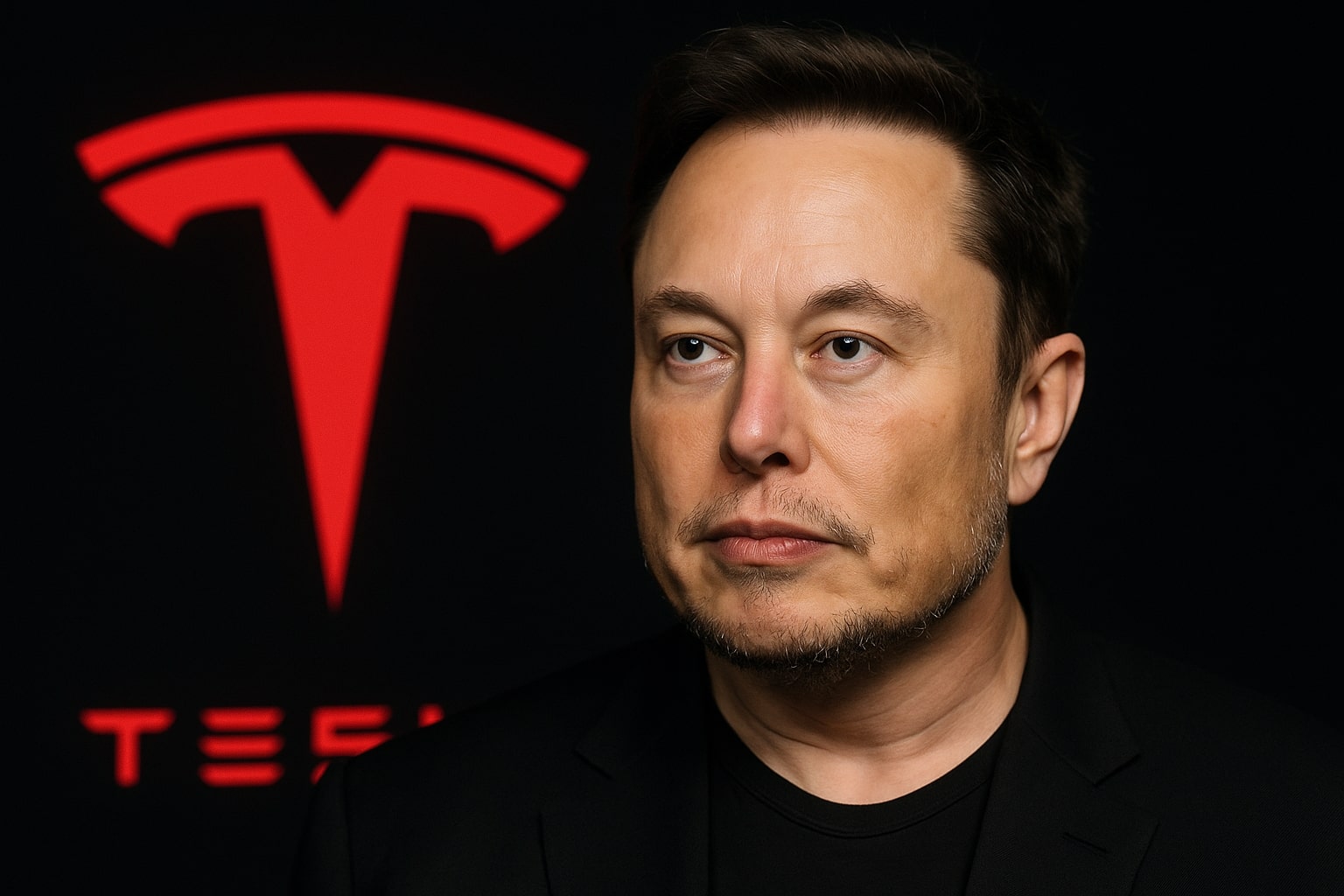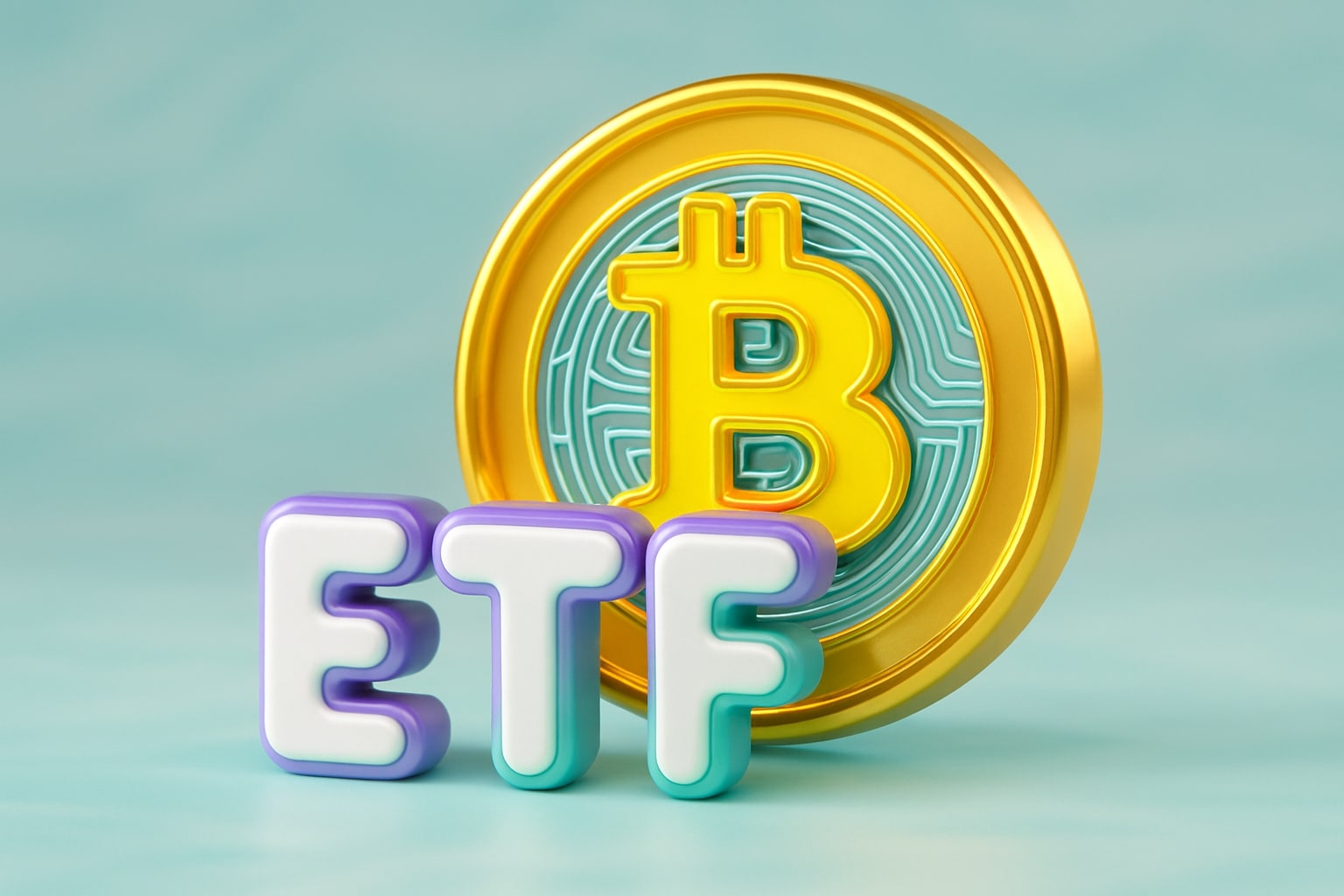NASDAQ:INTC Stock Price Surges to $40.14 as Intel’s AI Ambitions, Foundry Turnaround, and SambaNova Deal Speculation Reshape the Chipmaker’s Future
Intel Corporation (NASDAQ:INTC) trades at $40.14, up more than 75% year-to-date, marking one of the most dramatic comebacks in the semiconductor sector. After bottoming near $17.67 earlier this year, the stock has surged to within striking distance of its 52-week high at $42.47, propelled by a mix of government investment, foundry progress, and surging institutional demand. With a market capitalization of $191.26 billion, P/E ratio above 3,700, and a 10-year-high price-to-cash-flow multiple, Intel is no longer trading on backward-looking fundamentals—it’s trading on conviction that CEO Pat Gelsinger can execute a turnaround that sticks. The company’s shares now sit above the 50-day moving average of $31.71 and the 200-day of $24.92, confirming a structural uptrend supported by policy momentum and AI speculation.
Earnings Rebound: $13.65 Billion Quarter and a Return to Positive EPS
Intel’s Q3 2025 results represented its fourth consecutive beat, with revenue hitting $13.65 billion, up 2.78% year-over-year and 6% sequentially, exceeding the high end of its own guidance. The company delivered earnings per share (EPS) of $0.23, reversing last year’s loss of $0.46, while net income surged 124.4% to $4.06 billion. Operating expenses fell 19.7% to $4.36 billion, showcasing disciplined cost control even as gross margin expanded 400 basis points to 40%. The net profit margin improved to 29.7%, and EBITDA climbed 11.46% to $3.87 billion. Intel’s liquidity ratios remain solid with a quick ratio of 1.25 and current ratio of 1.60, supported by low leverage (debt-to-equity 0.38)—a critical buffer as the company continues to fund foundry expansion and AI chip development.
Government and Strategic Capital Infusion: $15.9 Billion in Support Fueling the Foundry Bet
Intel’s turnaround gained momentum when the U.S. government took a 10% strategic stake worth $8.9 billion, underscoring Washington’s commitment to domestic semiconductor manufacturing under the CHIPS Act. This was followed by Nvidia’s $5 billion collaboration investment, focused on integrating x86 architecture with Nvidia’s NVL72 systems, and SoftBank’s $2 billion contribution tied to joint AI infrastructure development. Collectively, these strategic capital inflows strengthened Intel’s balance sheet, funded its advanced fabs in Arizona (Fab 52 and 62), and bolstered investor sentiment that the U.S. sees Intel as the anchor of its silicon sovereignty strategy. The injection also reassured markets that Intel’s massive CapEx requirements—estimated above $25 billion annually—won’t derail its liquidity position.
Foundry Services: Losses Stabilizing as Yields Progress on 18A Node
Intel’s Foundry Services segment, historically the weakest link, now shows signs of stabilization. Operating losses hover near $2 billion, but revenue decline has slowed and cost absorption improved. The 18A process, Intel’s most advanced node, is now operational at Fab 52 in Arizona, with early yields tracking predictably though not yet margin-optimal. CFO David Zinsner confirmed yields are “adequate to address current supply” but need another year to reach industry-competitive efficiency. Management expects yields to reach profitable levels by late 2026, aligning with the commercial launch of Panther Lake CPUs and sampling of Crescent Island AI GPUs. The foundry’s breakeven path depends on securing external customers beyond Microsoft, its current anchor client. Speculation around AMD becoming a foundry customer remains unconfirmed but continues to support valuation.
Product Roadmap: Panther Lake, Nova Lake, and Crescent Island Anchor the 2026 Growth Cycle
Intel’s roadmap finally looks synchronized again. The Panther Lake CPU family, manufactured on the 18A node, is expected to ship its first SKU by end-2025, followed by broader availability in early 2026. The performance uplift from the 18A process—built on RibbonFET and PowerVia architectures—marks Intel’s strongest node leap in a decade. Meanwhile, Nova Lake, slated for late 2026, is seen as Intel’s key driver for PC market share recovery. On the AI side, the Crescent Island GPU will focus on inference computing, a strategic pivot away from Nvidia’s dominance in training. Sampling begins in H2 2026, targeting hyperscalers seeking cost-efficient inference solutions. Intel’s pivot to inference rather than training accelerators could unlock incremental revenue in an underpenetrated subsegment where margins remain healthier.
M&A Ambitions: SambaNova Talks Signal Deep Push Into AI Compute
Reports from multiple financial outlets confirm Intel is in active talks to acquire AI chipmaker SambaNova Systems, valued below its previous $5 billion mark. SambaNova’s strength lies in software-defined AI accelerators optimized for large language model inference—a natural complement to Intel’s Xeon and Gaudi product lines. The acquisition, if finalized, would not only enhance Intel’s AI portfolio but also bring in AI software and compiler IP critical for system-level optimization. It would also tighten Intel’s ecosystem against Nvidia (NASDAQ:NVDA) and AMD (NASDAQ:AMD), both of which dominate the training segment. Analysts estimate that if Intel pays $3–$4 billion for SambaNova, it could achieve cost synergies through internal fabrication and accelerate system integration for its AI PC and data center offerings. Negotiations remain preliminary, but even the rumor has fueled speculation that Intel intends to become a full-stack AI systems provider rather than just a silicon vendor.
Data Center and AI Segment: Margins Expanding Despite Flat Revenue
Intel’s Data Center & AI segment posted flat year-over-year revenue but saw margins surge from 9.2% in Q3 2024 to 23.4% in Q3 2025, reflecting stronger Xeon pricing and reduced inventory reserves. Demand for Xeon 6 processors remains stable among enterprise clients, while hyperscaler interest has plateaued pending AI accelerator updates. Intel’s Gaudi 3 accelerator, while technically competitive, lags in ecosystem adoption—but Crescent Island’s upcoming release is positioned to fix that. With AI chip orders accounting for over 12% of data center revenue, Intel is finally seeing measurable monetization from the AI wave, albeit slower than Nvidia.
Client Computing: Windows 11 Refresh and Lunar Lake Drive Sequential Gains
The Client Computing Group (CCG) delivered 8% sequential growth, fueled by strong demand for Lunar Lake CPUs and early adoption of AI-enabled PCs. The global Windows 11 refresh cycle, along with rising laptop ASPs, boosted margins even as unit shipments remained moderate. Intel now controls approximately 66% of the PC CPU market, up from 63% in early 2025, reversing two years of share loss to AMD. The upcoming Arrow Lake and Nova Lake transitions will determine if Intel can sustain these gains into 2026.
Institutional Accumulation: Hedge Funds and Pension Funds Rebuild Positions
Institutional confidence in NASDAQ:INTC is rising sharply. The Ohio State Teachers Retirement System (Strs Ohio) increased its holdings by 8.8%, now owning 1.7 million shares valued at $38.24 million, while Vanguard Group—Intel’s largest shareholder—raised its stake by 2.2% to 377.4 million shares, worth $8.57 billion. Other major holders include Northern Trust (45.9M shares), Invesco (43.6M), and Charles Schwab (35M), collectively representing 64.53% institutional ownership. These moves reflect renewed conviction that Intel’s turnaround has institutional backing and that its foundry progress is credible enough for long-horizon capital.
Analyst Ratings: Consensus Caution Despite Price Momentum
Despite the rally, Wall Street sentiment remains cautious. Of the 34 analysts covering NASDAQ:INTC, 2 rate it a Buy, 24 a Hold, and 8 a Sell, yielding an average consensus of “Reduce” and a median target price of $33.84. Morgan Stanley recently raised its target from $23 to $36, while Mizuho lifted its outlook to $41, citing foundry progress and improved cost discipline. HSBC nudged its target to $26, and KeyCorp maintained a sector weight rating. The lack of aggressive upgrades underscores market skepticism over near-term catalysts, but valuation multiples suggest investors are already discounting long-term foundry success.
Competitive Landscape: Intel’s Realignment Against Nvidia and AMD
Intel’s strategy differs from Nvidia (NASDAQ:NVDA) and AMD (NASDAQ:AMD), both of which focus heavily on AI training accelerators. Intel’s strength lies in leveraging its manufacturing scale, sovereign backing, and integration depth to serve enterprise and government AI workloads. Unlike Nvidia’s CUDA lock-in model, Intel is betting on open standards like oneAPI and cross-platform software, aiming to attract developers seeking flexibility. AMD continues to press on performance-per-dollar efficiency, but Intel’s AI PC ecosystem and upcoming server refresh cycles could reclaim key verticals such as government, education, and edge computing.
Technical Setup: Momentum Cooling After Parabolic Run
After rallying over 120% from its 2024 low, INTC is consolidating between $39.50 and $42.00. RSI remains near 68, slightly overbought but not signaling exhaustion. The MACD flattened in late October, showing a pause rather than reversal, while support stands firm at $38.60—a level that aligns with the 20-day EMA. A breakout above $42.50 could trigger a short-covering run toward $45.00, while failure to hold $39.00 could invite profit-taking toward $36.50, where institutional bids remain strong.
Trading News Analysis: Structural Momentum, Tactical Fragility
Intel’s turnaround is undeniable, but its valuation now reflects more faith than fundamentals. The company has regained operational credibility, tightened costs, and reestablished U.S. government trust as a strategic asset. However, near-term growth remains modest, foundry profitability is still distant, and the success of its AI pivot depends on execution, not ambition. The reported SambaNova acquisition could serve as the next major trigger, but without confirmation, Intel’s rally leans on momentum and investor optimism.
Verdict on NASDAQ:INTC
Based on full-cycle data, Trading News assigns NASDAQ:INTC a HOLD rating with a bullish bias. The $40–$42 range is justified by momentum, sovereign backing, and AI optionality, but a sustainable breakout above $45 requires tangible proof of foundry customer traction or AI revenue acceleration. Investors should track the real-time INTC chart and insider transactions for signs of conviction alignment. Intel’s story is one of delayed but undeniable progress—its fundamentals are finally catching up to its stock price, not the other way around.
That's TradingNEWS



















